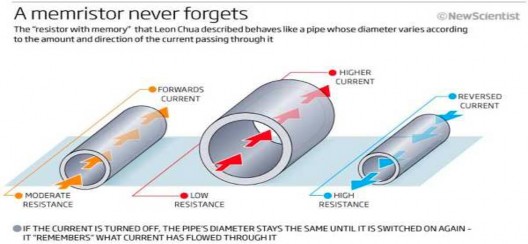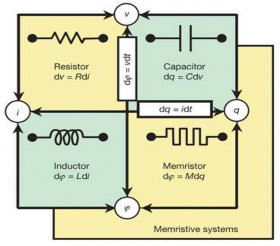40. MEMRISTOR-
♤ It is the long theorized basic circuit element that can generate voltage from a current (like a resistor), but in a more complex, dynamic manner -- with the ability to "remember" previous current.

♤ Memristors are basically a fourth class of electrical circuit, joining the resistor, the capacitor, and the inductor, that exhibit their unique properties primarily at the nanoscale. Theoretically, Memristors, a concatenation of “memory resistors”, are a type of passive circuit elements that maintain a relationship between the time integrals of current and voltage across a two terminal element. Thus, a memristors
resistance varies according to a devices memristance function, allowing, via tiny read charges, access to a “history” of applied voltage.


♤ The memristor was originally envisioned in 1971 by circuit theorist Leon Chua as a missing non-linear passive two-terminal electrical component relating electric charge and magnetic flux linkage.
♤ In March 2012, a team of researchers from HRL Laboratories and the University of Michigan announced the first functioning memristor array built on a CMOS chip for applications in neuromorphic computer architectures.
